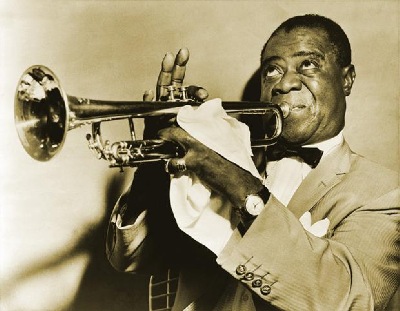
LOUIS ARMSTRONG
A seminal voice in Jazz
New Orleans trumpeter Louis Armstrong shaped early Jazz, his earthy singing and personality made him one of the most popular entertainers of the 20th Century with a broad international following. Also, if you listen to a classic Louis 78 rpm disc on a Victorola from the era, his sharp trumpet sound and pungent gravelly vocal project quite well through the medium.
Armstrong’s greatest strength was his power of improvisation expressed through his trumpet and voice. He had a genius for remaking, revising, editing and improving a melody or known theme, often by simplification or abbreviation. His rhythmic ideas -- shifting accents and emphasis, playing ahead of the beat, and a vibrato trailing his notes -- shaped the Jazz concept of “swing.” Armstrong not only influenced early Jazz but his popularity helped it grow and spread; his style impacted not only other trumpeters but the singers, saxophonists and everything to do with the culture and lore of Jazz.
On the other hand . . .
Armstrong is not above criticism. The two most common are:
1) The quality of his trumpet style declined beginning in the early 1930s. Despite occasional brilliance, he began consistently relying on repetitious high register riffs and crowd-pleasing pyrotechnics that broke little fresh ground.
2) A broader criticism argues that Louis’ brilliant solo improvising launched a cult of bravura solos eclipsing the original New Orleans ensemble style. Both musicians and the musical public, were so dazzled by the possibilities, that the ensemble polyphony brought north from New Orleans withered on the vine. The desire and ability to generate a sustained tapestry of simultaneously improvised interaction among several musical voices, brought North by men like King Oliver and Louis Armstrong, largely died out.
A voice like no other
I think part of Louis’ triumph as an artist was an ability to directly express his personality projecting it through the recorded medium. In the end there seemed to be no difference between the inner man and the outer one, as found in his music, speech, extensive private writings and tapes, and recordings.
Armstrong’s greatest strength and innovation, his primary musical contribution was in his ability to remold, abbreviate or improve the music he encountered. He revised melodies and his fluid sense of rhythm, shifting cadence, and playing ahead of the beat stamped his personality on the music. Over time, and despite stylistic shortcomings of the ‘30s and beyond, Satchmo’s music developed greater emotional depth becoming ever more personal and saturated with emotion.
“West End Blues” is widely considered his best recorded performance. Immediately recognized as a work of genius and emotional depth unusual for its day (1928), The Grove Dictionary of Jazz salutes its “unity of form and feeling rare in Jazz.”
West End Blues-Louis Armstrong.mp3
Pt. 1 - Louis Armstrong: In his Own Words
Louis Armstrong 1A.mp3
SWING THAT MUSIC -- Louis Armstrong and his Orchestra, 1936
COAL CART BLUES -- Louis Armstrong and his All Stars, 1940
FLEE AS A BIRD/DIDN’T HE RAMBLE -- Louis Armstrong & his All Stars, 1947
GUT BUCKET BLUES -- Louis Armstrong Hot Five, 1925
2:19 BLUES -- Louis Armstrong and his All Stars, 1940
DIPPERMOUTH BLUES (excerpt) -- King Oliver Creole Jazz Band, 1922
DIPPERMOUTH BLUES (excerpt) -- Chris Tyle's Silver Leaf Jazz Band
SNAKE RAG -- King Oliver’s Creole Jazz Band, 1922
SNAKE RAG -- Abbi Hubner’s Lowdown Wizards, 1971
STOMP OFF, LETS GO -- Erskine Tate’s Vendome Orchestra, 1925
Louis Armstrong 1B.mp3
HEEBIE JEEBIES -- Louis Armstrong Hot Five, 1925
WHAT IS THIS THING CALLED SWING -- Louis Armstrong and his Orchestra, 1936
SATCHEL MOUTH SWING -- Louis Armstrong and his Orchestra, 1936
SHADRACK -- Live at Club Hangover, San Francisco, 1954
THE SAINTS -- Live at Club Hangover, San Francisco, 1954
WHAT A WONDERFUL WORLD -- Louis Armstrong 1970
WEST END BLUES -- Live at Club Hangover, San Francisco, 1954
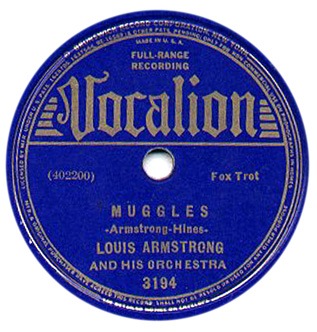
Pt. 2 - Louis Armstrong
Louis Armstrong 2A.mp3
STRUTTIN’ WITH SOME BARBEQUE -- Luis Russell Orchestra, 1938
DALLAS BLUES -- Luis Russell Orchestra, 1929
ST. LOUIS BLUES -- Luis Russell Orchestra, 1929
I’M JUST A LUCKY SO AND SO -- with Duke Ellington, 1961
PERDIDO STREET BLUES -- Louis Armstrong and his Orchestra (with Sidney Bechet), 1940
DOWN IN HONKY TONK TOWN -- . . . and his Orchestra (with Sidney Bechet), 1940
ON THE SUNNY SIDE OF THE STREET -- Luis Russell Orchestra, 1937
MAHOGANY HALL STOMP -- Louis Armstrong Savoy Ballroom Five, 1929
Louis Armstrong 2B.mp3
MONDAY NIGHT IN NEW ORLEANS -- Kermit Ruffins
SKID DAT-DE-DAT -- Tomas Ornberg’s Blue Five, 1981
MUSKRAT RAMBLE -- Louis Armstrong All Stars, Standard School Broadcast, 1948
BASIN STREET BLUES -- Louis Armstrong All Stars, vocal Jack Teagarden, Standard School Broadcast, 1948
BASIN STREET BLUES -- Louis Armstrong and his Hot Five, 1928
WEATHERBIRD -- duet with Earl Hines, 1928
I’M BEGINNING TO SEE THE LIGHT -- with Duke Ellington, 1961
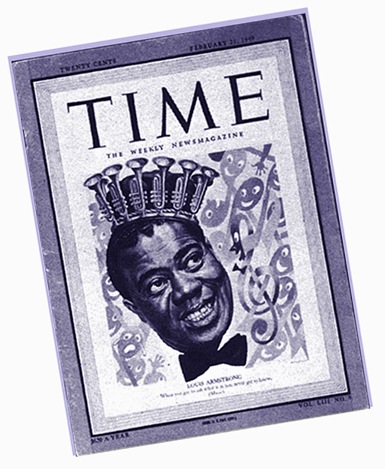
Pt. 3 - Louis Armstrong
Louis Armstrong 3A.mp3
SATCHELMOUTH SWING -- Louis Armstrong and his Orchestra, 1938
PUBLIC MELODY NUMBER ONE -- Louis Armstrong and his Orchestra, 1937
OLD MAN MOSE -- Louis Armstrong and his Orchestra, 1935
STRUTTIN’ WITH SOME BARBEQUE -- Louis Armstrong All Stars, Standard School Broadcast, 1948
IT DON'T MEAN A THING -- with Duke Ellington, 1961
MACK THE KNIFE -- Louis Armstrong All Stars, Edward R. Murrow narrator, 1956
DROP ME OFF IN HARLEM -- with Duke Ellington, 1961
Louis Armstrong 3B.mp3
MENTAL STRAIN AT DAWN -- Jack Purvis and his Orchestra, 1929
JEEPERS CREEPERS -- Doc Cheatham and Nicholas Payton, 1987
JEEPERS CREEPERS -- Louis Armstrong and his Orchestra, 1939
CANAL ST BLUES -- Louis Armstrong with Bob Haggarts Orchestra, 1957
EVERYBODY LOVES MY BABY -- Louis Armstrong with Bob Haggart’s Orch, 1957
AZALEA -- with Duke Ellington, 1961
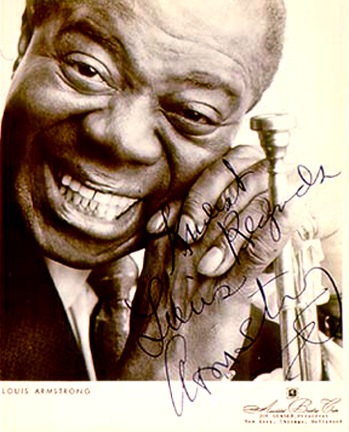
Pt. 4 - Louis Armstrong in the 1920’s
Louis Armstrong 4A.mp3
I GOTTA RIGHT TO SING THE BLUES -- Louis Armstrong & his Orch, 1933
POTATO HEAD BLUES -- -- Louis Armstrong and his Hot Seven, 1927
CANAL STREET BLUES -- Southern Stompers, with Irakli, cornet, 1990
TEARS -- King Oliver’s Creole Jazz Band, 1923
I AINT GONNA TELL NOBODY -- Peruna Jazzmen, 1990
SKID DAT-DE-DAT -- Louis Armstrong and his Hot Five, 1928
ALONE AT LAST -- Fletcher Henderson & his Orchestra (Edit), 1925
TELL ME DREAMY EYES -- Fletcher Henderson & his Orch (Edit), 1924
EASY COME EASY GO -- Jimmy Bertrand’s Washboard Wizards, 1927
Louis Armstrong 4B.mp3
WILD MAN BLUES -- Johnny Dodds Black Botton Stompers, 1927
PAPA DIP -- Zenith Hot Stompers, 1989
JAZZ BATTLE -- Jabbo Smith and his Rhythm Aces, 1929
WEST END BLUES -- Louis Armstrong Hot Five 1928
HUSTLIN’ AND BUSTLIN’ FOR BABY -- . . . & his Orch, 1933
SWEETHEARTS ON PARADE -- . . . and his New Sebastian’s Cotton Club Orch
WHAT DID I DO TO BE SO BLACK AND BLUE -- . . . and his Orchestra, 1929
THANKS A MILLION -- Luis Russell Orchestra, 1935
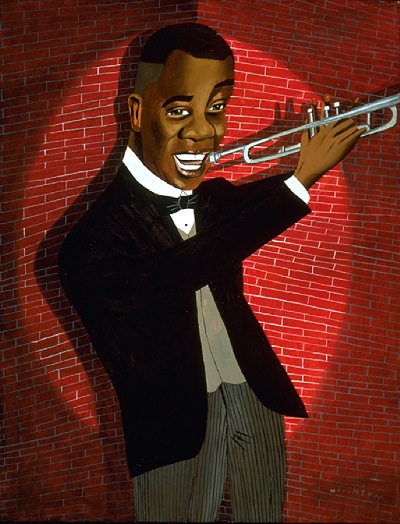
Louis
by <I>Mark Ulriksen</I>
Links:
Louis Armstrong House
http://www.louisarmstronghouse.org/
The New Red Hot Jazz Archive
https://syncopatedtimes.com/louis-satchmo-armstrong-1901-1971/
PBS
http://www.pbs.org/jazz/biography/artist_id_armstrong_louis.htm
NPR
http://www.npr.org/artists/15185958/louis-armstrong
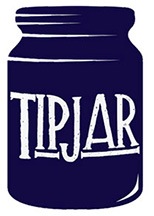
This site is free. But you can help sustain it, and encourage me with donation to the tip jar.
Secure payment through PayPal is anonymous, except that I will see your e-mail address.
Donations are paid securely through PayPal.
Donation $5.00
Donation $10.00
Donation $20.00
Donation $35.00
Donation $50.00
Donation: You decide
